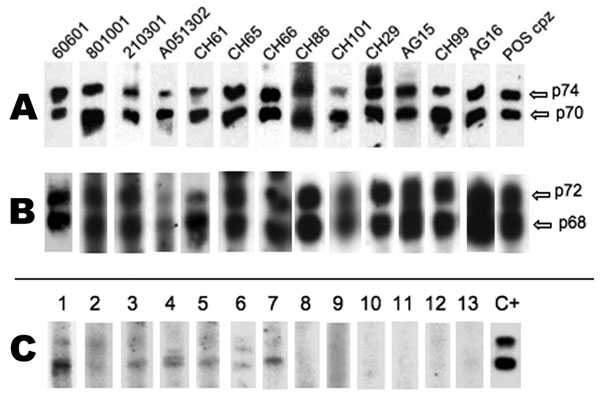Volume 13, Number 9—September 2007
Research
Simian Foamy Virus Transmission from Apes to Humans, Rural Cameroon
Figure 2

Figure 2. A) Western blot (WB) results based on chimpanzee (cpz) simian foamy virus (SFV) antigens. B) WB results based on monkey simian foamy virus antigens originating from participant AG16. C) Example of sero-indeterminate samples (lanes 1–7) and negative samples (lanes 8–13), detected by cpzSFV WB. Last lane (POS cpz), serum from an SFV-positive chimpanzee.
Page created: July 01, 2010
Page updated: July 01, 2010
Page reviewed: July 01, 2010
The conclusions, findings, and opinions expressed by authors contributing to this journal do not necessarily reflect the official position of the U.S. Department of Health and Human Services, the Public Health Service, the Centers for Disease Control and Prevention, or the authors' affiliated institutions. Use of trade names is for identification only and does not imply endorsement by any of the groups named above.